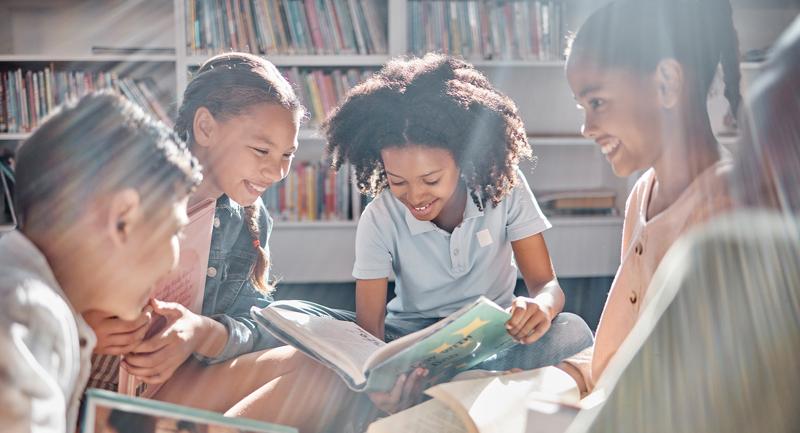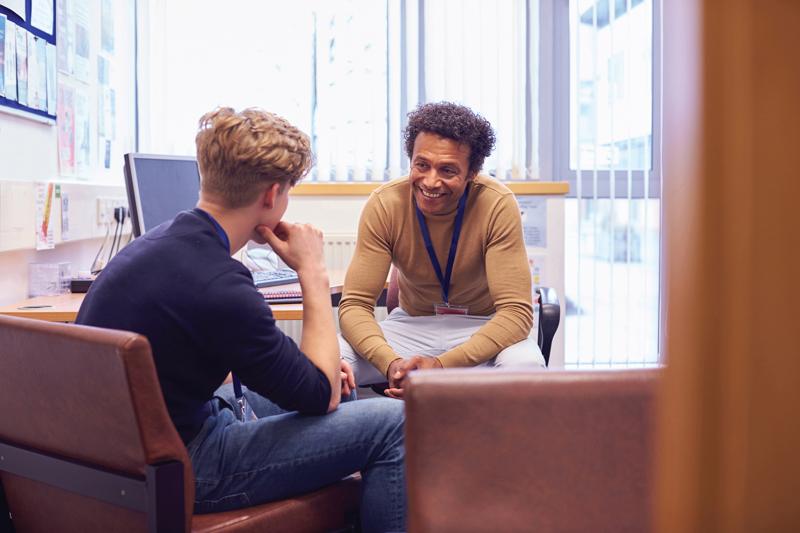Transformational Learning Principle
Guide—Spark Curiosity: Educators connect content and skills to students’ prior knowledge, experiences, and passions to spark curiosity and inspiration. Technology is used to create new pathways for student engagement and enable students to express knowledge, skills, and aspirations in a variety of ways.
As educators, we typically think of curiosity as driving motivation and engagement rather than cognition. While curiosity does spark the joy of learning, it is more than a disposition to drive engagement. Curiosity is the launchpad for learning, as the science of learning shows—curiosity not only fuels engagement but also activates the cognitive processes that support deeper understanding and long-term retention.
The brain’s main directive is to learn and figure things out. Curiosity is the kindling upon which we ignite the brain’s information processing cycle by leveraging whatever is capturing students’ attention at the moment. This spark activates their schema—the mental frameworks built from students’ prior knowledge and experiences—and sets the stage for new learning to take hold.
When we ignite curiosity, we help to build students’ intellectual character. Not only can curiosity spark joy and interest, but it can also lead to surprises, disappointments, and frustrations as students follow lines of inquiry. Navigating this range of emotions builds students’ ability to self-regulate when grappling with the uncertainty that often comes with curiosity-driven learning. Over time, curious students become adventurous learners—willing to persist through confusion or frustration in pursuit of meaningful answers to their questions.
Using Technology to Fuel Inquiry
Importantly, sparking curiosity is not about students arriving at one right answer but rather about how students deepen their understanding by exploring complex questions. This is where technology can be helpful—by creating new pathways and modalities for students to engage with big ideas. Educators can facilitate student inquiry by using technology to help them capture and reflect on curiosity-driven learning expeditions. Tolisano and Hale (2018) describe three ways technology can support and extend student curiosity:
Documentation of learning. Students use technology to collect and display artifacts from their curiosity-driven explorations.
Documentation for learning. Students interpret and connect these artifacts to their existing knowledge and experiences, expanding their curiosity through meaning-making.
Documentation as learning. Students reflect on the process of capturing and analyzing artifacts, using them to deepen curiosity and build metacognitive awareness of their own learning.
By thoughtfully integrating technology, educators can help students document their curiosity-driven learning and better see themselves as thinkers, meaning-makers, and explorers. But to fully nurture student curiosity, technology must work hand in hand with intentional instructional strategies—ones that create space for exploration, questioning, and discovery.
Part of being curious means getting your hands dirty, being vulnerable, and failing forward.
Sparking Curiosity in the Classroom
Curiosity doesn’t flourish on its own. The following five instructional strategies can help educators spark and sustain curiosity in any classroom.
1. Invite students to ask powerful essential questions.
An “essential question” is an open-ended, thought-provoking inquiry that guides learning and promotes deeper understanding of a subject’s core ideas. Essential questions invite students to explore big concepts, share their perspectives, and engage in discussion. Educators can model how to craft strong essential questions and help students create their own by emphasizing these four key characteristics:
Essential questions don’t have a single correct answer but invite multiple perspectives and ongoing inquiry.
They are thought-provoking. They stimulate intellectual curiosity, deeper thinking, and creative problem solving.
They require grappling. Essential questions engage higher-order thinking skills like analysis, evaluation, and synthesis rather than just recall.
They are meaningful and relevant to students’ lives. Essential questions connect to real-world issues and problems that matter beyond the classroom.
2. Encourage exploration with thinking routines.
Exploration, experimentation, and tinkering are all ways to spark curiosity or help students dig into a topic and develop a lens for their inquiry. To support this, educators can provide students with thinking routines—structured ways for students to follow their curiosity around an interesting topic or process to better understand it and make meaning. When educators provide thinking routines, students are able to move from curiosity to clarity.
Two such thinking routines come out of Project Zero at Harvard’s Graduate School of Education. The first one is from Agency by Design, a research initiative focused on maker-centered learning. The thinking routine is “Looking Closely, Exploring Complexity, Finding Opportunity.” It is designed to provide students with a process to channel their curiosity as they take time to get up close and linger over the details of an object or system, focus their attention on what seems interesting, and find new ways of understanding through tinkering or redesign. Together, these three capacities nurture a mindset where curiosity drives deeper thinking, problem solving, and creativity.
Another thinking routine from Project Zero, “Parts, Purposes, and Complexities,” encourages students to explore the architecture of a system, an object, or a process. This routine invites curious students to begin organizing and categorizing elements of the system, object, or process by helping them analyze how elements are connected and the purpose these elements serve in the system. This routine builds students’ lenses for analyzing complex systems and events.
3. Cultivate the habit of noticing and naming.
As exemplified in the thinking routines, giving students language for observing is key to guiding them through curiosity-driven exploration. To develop student capacity to notice and name, educators can begin with student observations rather than their own. Inviting students to notice starts with helping them understand what kinds of things can be noticed—and giving them the words to name those things. This gently points students in a direction without leading them there outright, while also building their schema and background knowledge over time. Some prompts to start with include:
Did anyone notice . . . ? Invite students to surface interesting words, patterns, or connections.
What kind of [___] is this? Encourage classification and comparison to reveal structure or purpose.
What is surprising or confusing you? Prompt students to share what feels unexpected or unclear, opening the door to further exploration.
The ability to spark and sustain curiosity is a powerful driver of student learning.
4. Help students “make the familiar strange” and widen their aperture.
In addition to looking closely and exploring complexities, we want students to “make the familiar strange.” In sociology, this phrase means to critically examine and question things we often take for granted. We want students to use their curiosity to challenge assumptions about what they think they know and how things are supposed to go. As we make the familiar strange, we widen our observational aperture. Just as a camera opens its aperture to let more light in, we want students’ curiosity to expand their world. Educators can facilitate this defamiliarization process by encouraging students to:
Question why certain behaviors are considered “normal” or “natural.”
Look at the way a process in our Western culture is carried out in other cultures, or how we are doing the same thing in different parts of the world.
Examine how media portrayals shape our understanding of social issues.
5. Embrace mistakes, detours, and false starts as part of curiosity unfolding.
When we commit to curiosity, we are also committing to being adventurous. That means we’ll have false starts, hit dead-ends, and need to backtrack. Too often, we don’t build a culture of errors in our classrooms that encourages students to push through setbacks or recognize that what looks like a mistake could be offering some new information. Part of being curious means being willing to get your hands dirty, being vulnerable as a learner, and failing forward. Without these capacities, curiosity doesn’t translate into real learning progress because students become stuck in a fixed mindset. Some ways to embrace mistakes in the classroom include:
Giving students space to talk about their confusions.
Helping students reflect on the “muddiest point” of a text or topic and to get curious about sorting out their confusion.
Destigmatizing errors. Instead, reframe errors as information.
Making Curiosity a Habit
The ability to spark and sustain curiosity is a powerful driver of student learning. It sets the stage for students to develop their expertise and build background knowledge. The five strategies described here can help create dynamic opportunities for students to explore ideas, pursue questions, and make their thinking visible. When paired with technology, we can offer students even greater agency. Then curiosity becomes more than a momentary spark—it becomes a habit of mind that supports deep understanding and cognitive growth.
Reflect & Discuss
➛ How can you help students feel psychologically safe enough to be vulnerable and open to
mistakes, false starts, and ambiguity?
➛ How are you leveraging students’ curiosity to build their agency as leaders of their own learning?








